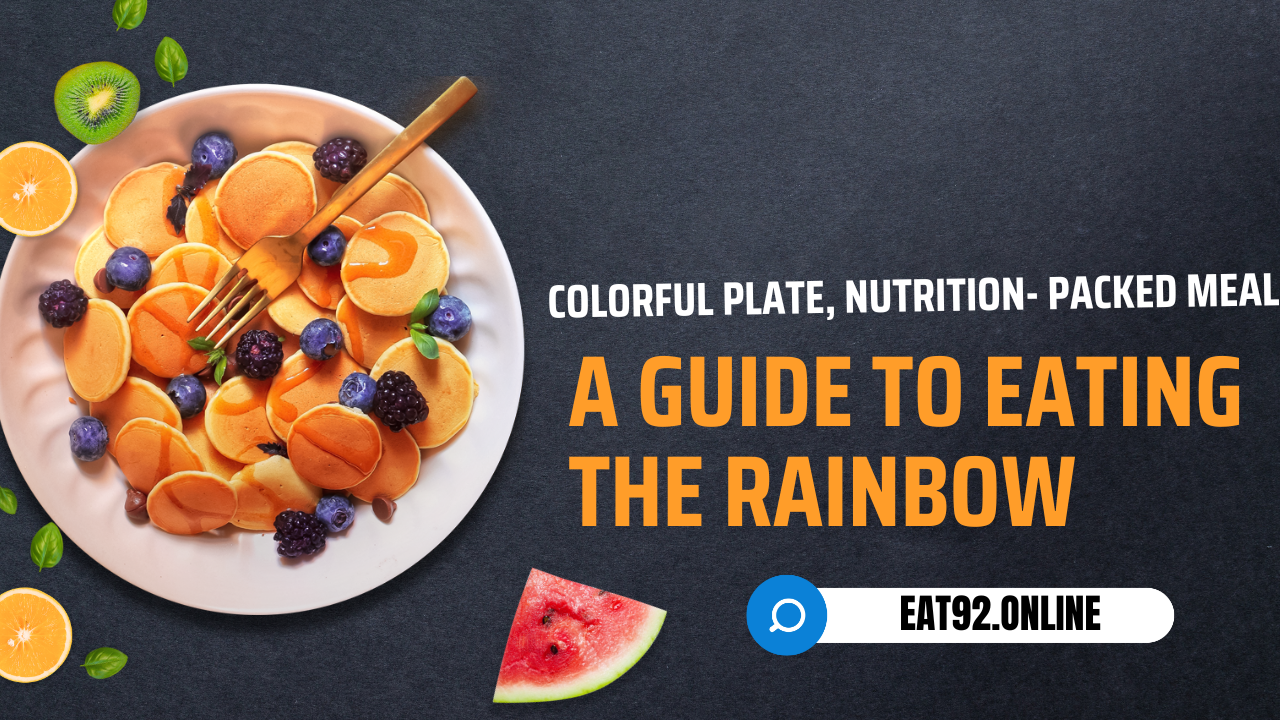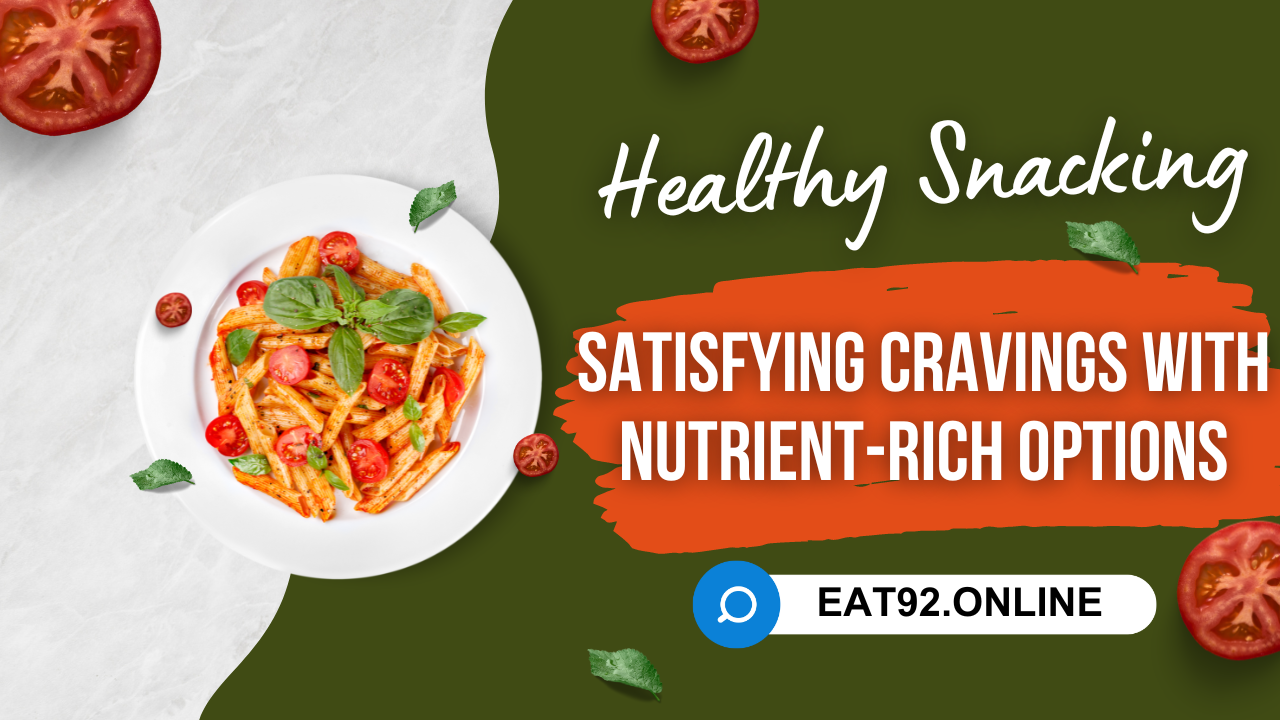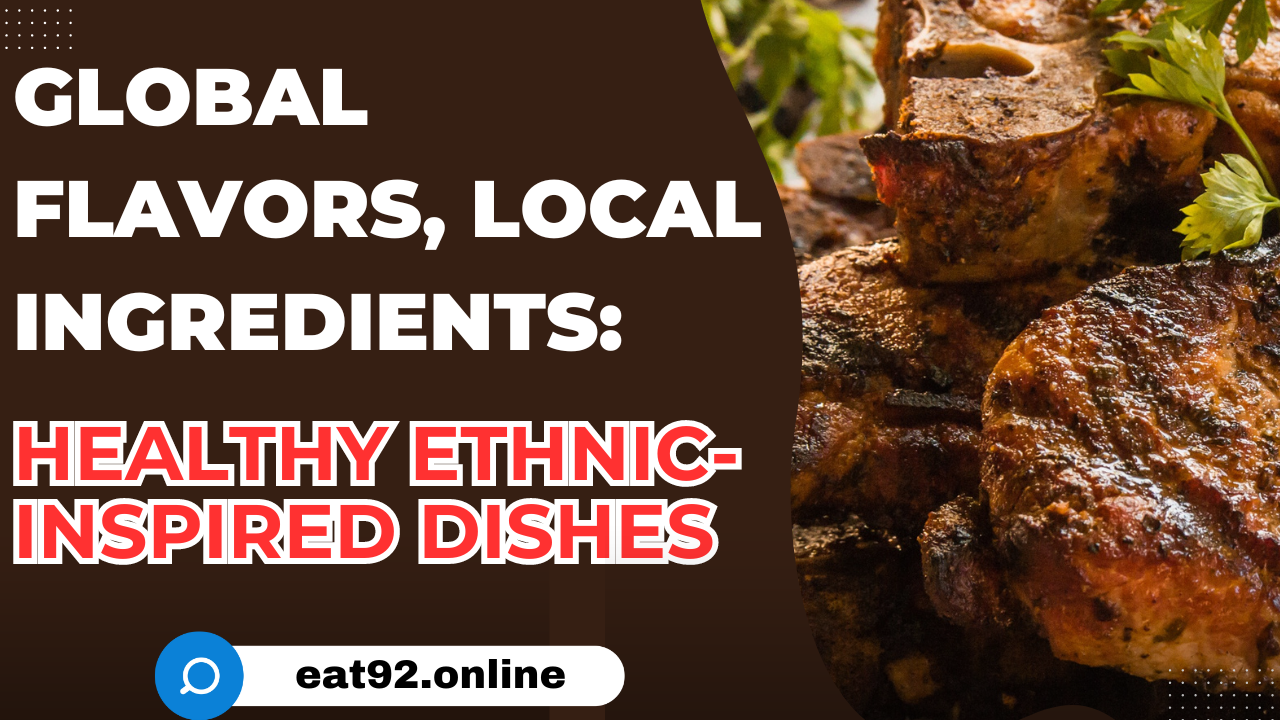Colorful Plate, Nutrient-Packed Meal: A Guide to Eating the Rainbow

Are you ready to embark on a culinary journey that is as visually stunning as it is nutritious? Look no further than the colorful plate of a nutrient-packed meal. In this guide, we will explore the concept of Colorful Plate, Nutrient-Packed Meal: A Guide to Eating the Rainbow
Why is eating a colorful plate important?
By incorporating a variety of vibrant fruits and vegetables into your diet, you not only add a burst of color to your plate but also a wide range of essential nutrients. Each color represents a unique set of vitamins, minerals, and antioxidants that contribute to your overall health and well-being.
Eating a colorful plate is important because different colors in fruits and vegetables are indicative of the presence of specific nutrients. For example, red fruits and vegetables like tomatoes and strawberries are rich in lycopene, a powerful antioxidant that helps protect against certain types of cancer and heart disease. On the other hand, orange fruits and vegetables like carrots and sweet potatoes are high in beta-carotene, which is converted to vitamin A in the body and promotes good eye health.
In addition to their nutritional benefits, colorful fruits and vegetables also provide a visual feast for the eyes. The vibrant hues of a rainbow plate can make your meals more enticing and enjoyable, making it easier to maintain healthy eating habits in the long run. So, don’t be afraid to add some color to your plate and reap the rewards of a nutrient-packed meal.
The benefits of eating a nutrient-packed meal
When you focus on consuming a nutrient-packed meal, you give your body the fuel it needs to function optimally. Nutrient-dense foods are packed with vitamins, minerals, and other essential nutrients that support various bodily functions and help prevent chronic diseases.
One of the key benefits of eating a nutrient-packed meal is improved overall health. By providing your body with a wide range of nutrients, you support your immune system, enhance your energy levels, and promote healthy digestion. Nutrient-dense foods can also help maintain a healthy weight and reduce the risk of obesity-related conditions such as diabetes and heart disease.
In addition to physical health benefits, a nutrient-packed meal can also have a positive impact on your mental well-being. Certain nutrients, such as omega-3 fatty acids found in fatty fish like salmon, have been linked to improved brain function and reduced risk of depression. By nourishing your body with a variety of nutrients, you support both your physical and mental health, leading to a higher quality of life.
Understanding the concept of “eating the rainbow”
The concept of “eating the rainbow” is based on the idea that different colors of fruits and vegetables offer unique sets of nutrients. By diversifying your daily diet with an assortment of colors, you ensure that your body receives a well-rounded intake of phytochemicals, fiber, and other key nutrients.
Red fruits and vegetables, such as tomatoes, red peppers, and watermelon, are rich in lycopene and anthocyanins. These compounds have been shown to have antioxidant and anti-inflammatory properties and may help reduce the risk of certain cancers and cardiovascular diseases.
Orange and yellow fruits and vegetables, such as carrots, sweet potatoes, and oranges, are packed with beta-carotene, vitamin C, and other antioxidants. These nutrients support healthy skin, promote good vision, and boost immune function.
Green fruits and vegetables, including leafy greens, broccoli, and kiwi, are excellent sources of vitamins A, C, and K, as well as folate and fiber. They help support healthy bones, improve digestion, and provide a wide range of antioxidants.
Blue and purple fruits and vegetables, such as blueberries, purple cabbage, and eggplant, are rich in anthocyanins, which have been shown to have anti-aging and anti-inflammatory properties. They may also help improve memory and protect against certain types of cancer.
By including a variety of colors in your diet, you can ensure that you’re getting a wide range of nutrients that support your overall health and well-being.
The health benefits of different colored fruits and vegetables
Each color of fruits and vegetables offers a different array of nutritional benefits. Let’s dive into the health benefits of each color and discover how they can contribute to your well-being:
Red:
- Red fruits and vegetables are rich in lycopene and anthocyanins.
- Lycopene has been linked to a reduced risk of certain cancers and heart disease.
- Anthocyanins have antioxidant and anti-inflammatory properties.
Orange and Yellow:
- Orange and yellow fruits and vegetables are high in beta-carotene and vitamin C.
- Beta-carotene is converted to vitamin A in the body and promotes good eye health.
- Vitamin C supports immune function and collagen production for healthy skin.
Green:
- Green fruits and vegetables are packed with vitamins A, C, and K, as well as folate and fiber.
- They support healthy bones, improve digestion, and provide a wide range of antioxidants.
- Leafy greens, in particular, are rich in iron and calcium.
Blue and Purple:
- Blue and purple fruits and vegetables contain anthocyanins, which have anti-aging and anti-inflammatory properties.
- They may help improve memory and protect against certain types of cancer.
- These fruits and vegetables also provide a good source of vitamins C and K.
Incorporating a variety of colors into your diet ensures that you’re getting a diverse range of nutrients that are essential for your health.
How to incorporate more colors into your meals
Now that you understand the importance of a colorful plate, it’s time to explore how you can incorporate more colors into your meals. Here are some tips to help you get started:
- Start by making a list of colorful fruits and vegetables that you enjoy. Consider their nutritional benefits and try to include a variety of colors in your meals.
- Experiment with different cooking methods, such as roasting, steaming, and grilling, to preserve the vibrant colors and nutrients of your produce.
- Create colorful salads by combining a variety of leafy greens, sliced fruits, and vegetables. Add some nuts or seeds for extra crunch and flavor.
- Make smoothies with a mix of colorful fruits and vegetables, such as spinach, berries, and carrots. You can also add a scoop of protein powder or Greek yogurt for an extra nutritional boost.
- Use colorful fruits and vegetables as toppings for your favorite dishes, such as pizzas, stir-fries, and grain bowls. This not only adds visual appeal but also enhances the nutritional value of your meals.
- Don’t be afraid to try new and exotic fruits and vegetables that you may not be familiar with. This can add excitement and variety to your meals.
By incorporating more colors into your meals, you can create visually appealing dishes that are packed with nutrients, making your dining experience both enjoyable and healthy.
Tips for meal planning and grocery shopping for a colorful plate
Meal planning and grocery shopping play a crucial role in ensuring that you have a colorful plate full of nutrient-packed meals. Here are some tips to help you make the most of your meal planning and grocery shopping:
- Plan your meals in advance. Take some time each week to plan your meals, considering the colors and nutrients you want to incorporate.
- Make a grocery list based on your meal plan. Include a variety of colorful fruits and vegetables, as well as other ingredients you need for your meals.
- Shop at local farmers’ markets or produce stands to find a wider variety of fresh, seasonal produce. This not only supports local farmers but also ensures that you’re getting the freshest and most flavorful ingredients.
- Read labels and choose whole, unprocessed foods whenever possible. Processed foods are often stripped of their natural colors and nutrients, so opt for fresh or frozen fruits and vegetables instead.
- Be open to trying new recipes and ingredients. This will keep your meals interesting and help you discover new ways to incorporate colors into your diet.
- Consider buying fruits and vegetables in bulk and freezing them for later use. This can be a cost-effective way to ensure you always have a variety of colors available.
By planning your meals and shopping with a focus on colorful and nutrient-packed ingredients, you can create a vibrant and healthy eating habit that will benefit your body and mind.
Recipes and meal ideas for a nutrient-packed meal
Now that you have a better understanding of the importance of a colorful plate and how to incorporate more colors into your meals, let’s explore some recipes and meal ideas that will help you create nutrient-packed meals:
- Rainbow Salad:
- Ingredients:
- Mixed greens
- Cherry tomatoes
- Bell peppers (red, yellow, and orange)
- Carrots
- Purple cabbage
- Avocado
- Feta cheese
- Directions:
- Chop the vegetables into bite-sized pieces.
- Toss them together in a large bowl.
- Top with avocado and feta cheese.
- Drizzle with a light dressing of your choice.
- Colorful Stir-Fry:
- Ingredients:
- Broccoli
- Red bell peppers
- Yellow squash
- Purple onion
- Snow peas
- Chicken breast (optional)
- Soy sauce
- Garlic
- Sesame oil
- Directions:
- Slice the vegetables and chicken breast (if using) into thin strips.
- Heat some sesame oil in a pan or wok.
- Add garlic and sauté until fragrant.
- Add the vegetables and chicken, and stir-fry until cooked.
- Season with soy sauce and serve over steamed rice or noodles.
- Colorful Smoothie Bowl:
- Ingredients:
- Spinach
- Frozen mixed berries
- Banana
- Greek yogurt
- Toppings (granola, sliced fruits, chia seeds, etc.)
- Directions:
- Blend the spinach, frozen berries, banana, and Greek yogurt until smooth.
- Pour into a bowl and top with your favorite toppings.
These are just a few examples of the many colorful and nutrient-packed meals you can create. Don’t be afraid to get creative and experiment with different ingredients and flavors. The possibilities are endless!
The role of spices and herbs in adding color and flavor
When it comes to creating a colorful and flavorful plate, spices and herbs play a crucial role. They not only add depth and complexity to your meals but also contribute to the vibrant colors that make your dishes visually appealing.
Spices like turmeric, paprika, and saffron can add a beautiful yellow hue to your meals. They also offer a range of health benefits, such as reducing inflammation and boosting immunity. Herbs like basil, parsley, and cilantro not only provide a burst of freshness but also add vibrant green tones to your dishes. They are also rich in antioxidants and can help detoxify the body.
In addition to their colors, spices, and herbs can enhance the flavors of your meals without adding extra calories or sodium. They allow you to create delicious and nutritious dishes without relying heavily on salt, sugar, or unhealthy fats. So, don’t be afraid to experiment with different spices and herbs to add both flavor and color to your meals.
The impact of cooking methods on preserving colors and nutrients
The way you cook your fruits and vegetables can have a significant impact on the preservation of their colors and nutrients. Here are some tips to help you maintain the vibrancy and nutritional value of your colorful produce:
- Steaming: Steaming is a gentle cooking method that helps retain the colors and nutrients of your vegetables. It involves cooking the produce over boiling water until tender. This method is particularly suitable for delicate vegetables like broccoli and asparagus.
- Roasting: Roasting brings out the natural sweetness of fruits and vegetables while preserving their vibrant colors. Toss your produce with a little olive oil, salt, and pepper, then roast them in the oven until they are caramelized and tender. This method works well for root vegetables like carrots and beets.
- Sautéing: Sautéing involves cooking your produce quickly in a little oil over high heat. This method helps retain some of the vibrant colors and nutrients while adding a delicious caramelized flavor. Sautéing works well for colorful vegetables like bell peppers and zucchini.
- Raw: Eating fruits and vegetables raw is the best way to preserve their colors and nutrients. Raw produce is packed with vitamins, minerals, and enzymes that can be lost during cooking. Enjoy a colorful salad or a refreshing fruit bowl to reap the maximum benefits.
By choosing the right cooking methods and being mindful of the cooking time, you can ensure that your colorful produce retains its vibrant colors and nutritional value.
Conclusion: Embracing a colorful and nutrient-packed diet
In conclusion, incorporating a variety of colors into your meals is not only visually appealing but also essential for your overall health and well-being. By eating the rainbow, you ensure that your body receives a well-rounded intake of essential nutrients, vitamins, and minerals.
The health benefits of different colored fruits and vegetables are vast and varied. From the antioxidant properties of red and purple produce to the immune-boosting effects of orange and yellow fruits and vegetables, each color offers unique nutritional benefits.
With a little planning and creativity, you can easily incorporate more colors into your meals. Experiment with new recipes, try different cooking methods and explore the world of spices and herbs to add flavor and vibrancy to your dishes.
Remember, a colorful plate is a nutrient-packed plate. So, say goodbye to bland and monotonous meals and embrace the transformative power of eating with your eyes as well as your taste buds. Take this guide as your inspiration and start your journey to a vibrant and nutrient-packed dining experience today!




